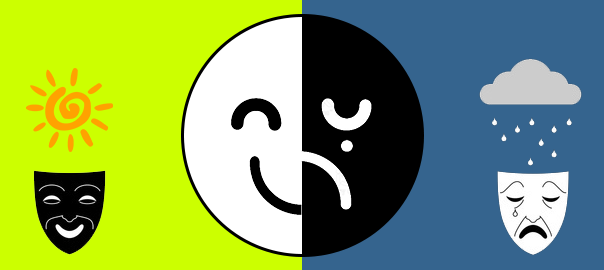Medically reviewed by Dr. Riaz Ali Shah.
Humans are the only living beings in this world to experience more than 20 different emotions throughout their lifetime. Some days are full of rainbows and butterflies, while others are taken over by dark clouds. Each day brings with itself a different experience and along with it, a different feeling. But, when the highs and lows reach the severity of costing you your job, relationships and everyday life, it becomes a disease. Although treatable, bipolar disorder is not well recognized, leading to worsening of the symptoms. Because recognizing the problem is the first step to treating it, let’s educate ourselves about this mental illness.

What is Bipolar Disorder?
Previously known as manic depressive psychosis, bipolar disorder is a mental illness that causes serious shifts in mood, energy, thinking, and behavior. The lows of depression can cause suicidal thoughts to become a norm, while the highs of mania can make the sufferer feel like they are on the top of the world. More than just a transitory period of mood swings, the cycles of bipolar disorder last for days, weeks or months.

Manic Episode
Mania and hypomania are the terms used to refer to the over-active and excited phase of bipolar disorder. While hypomania can cause the energy levels to become higher than normal, mania is a much severe form and can even require one to be hospitalized. The symptoms include:
- Feelings of extreme excitement and euphoria
- Insomnia or lack of sleep but still feeling energetic
- Racing thoughts that come and go quickly
- Impulsive behaviors like increased spending, gambling, drinking etc.
- Acting recklessly without thinking about the consequences
- Talking so rapidly that others can’t keep up
- Extreme irritability

Depressive Episode
Bipolar disorder is considered a type of depression mainly because the depressive episode usually lasts longer than the manic one. The symptoms of this phase are similar to that of major depression and present with:
- Feelings of sadness, hopelessness or emptiness
- Feeling worthless and guilty
- Fatigue or loss of energy
- Appetite and weight changes
- Concentration and memory problems
- Sleep problems
- Suicidal thoughts or thinking of death

Solving the Bipolar Puzzle

Spotting the symptoms of bipolar disorder is enough to start climbing up the ladder of therapy. If you notice these in yourself or a loved one, don’t delay treatment as it can only get worse with time. Because it is a complex condition, its best to seek an experienced psychiatrist and keep going as it requires long term treatment.
Medicines are not the only way out

To fully control the symptoms of bipolar disorders, medicines are never used alone. It is crucial for the patient to make certain lifestyle changes, take behavior therapies and most importantly for their close family and friends to be on board. When the sufferer’s loved ones are supportive, patient and accepting, recovery becomes easier. Life in and of itself is a roller coaster ride, but when your feelings come in competition with it, every single day turns into a test. So, always take the road of empathy when it comes to dealing with loved ones suffering from bipolar disorder and remember, patience is the key!
Guest Post Credit:Dr. Maleeha Syed






